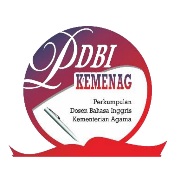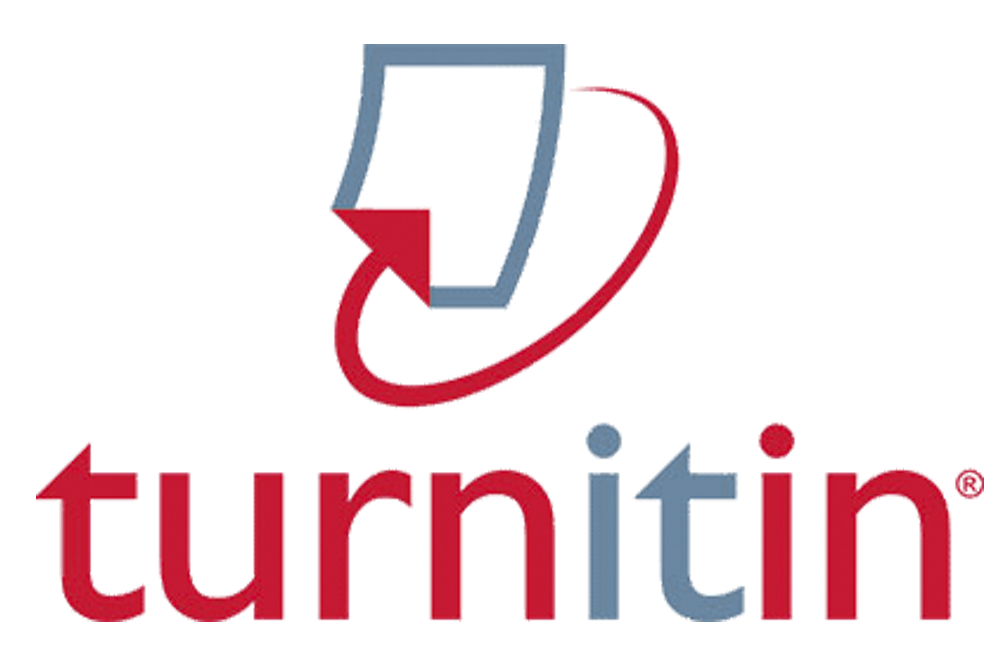Improving Students’ Academic Writing Quality by Using ICT Online Tools at English Tadris Study Program in IAIN Curup
Abstract
Keywords
Full Text:
PDFReferences
Andreasen, L. B., Winther, F., Hanghøj, T., & Larsen, B. (2014). COLWRIT - collaborative online writing in google docs: Presenting a research design. Proceedings of the European Conference on E-Learning, ECEL, 2014-Janua, 692–695.
Austin, A. E. (2002). Preparing the Next Generation of Faculty. Journal of Higher Education, 73(1), 94–122. https://doi.org/10.1177/1524838007301163
Bailey, R. (2008). Academic Staff Perceptions of the Role and Utility of Written Feedback on Students’ Written Work. Zeitschrift Schreiben.
Bailey, R. (2019). Student Writing and Academic Literacy Development at University. Journal of Learning and Student Experience │, 1(7), 1–12.
Béjoint, H. (1981). The foreign student’s use of monolingual English dictionaries: A study of language needs and reference skills. Applied Linguistics, 2(3), 207–222. https://doi.org/10.1093/applin/2.3.207
Byrnes, H. (2013). Positioning writing as meaning-making in writing research: An introduction. Journal of Second Language Writing, 22(2), 95–106. https://doi.org/10.1016/j.jslw.2013.03.004
Castro Sánchez, J. J., & Chirino Alemán, E. (2011). Teachers’ opinion survey on the use of ICT tools to support attendance-based teaching. Computers and Education, 56(3), 911–915. https://doi.org/10.1016/j.compedu.2010.11.005
Chan, A. Y. W. (2012). Cantonese ESL learners’ use of grammatical information in a monolingual dictionary for determining the correct use of a target word. International Journal of Lexicography, 25(1), 68–94. https://doi.org/10.1093/ijl/ecr014
Coffin, C., & Donohue, J. P. (2012). English for Academic Purposes: Contributions from systemic functional linguistics and Academic Literacies. Journal of English for Academic Purposes, 11(1), 1–3. https://doi.org/10.1016/j.jeap.2011.11.008
Cohen, L., Manion, L., & Morrison, K. (2007). Research Methods in Education. In Research Methods in Education. Routledge. https://doi.org/10.4324/9780203029053-23
Cohen, L., Manion, L., & Morrison, K. (2018). Research Method in Education (8th ed.). Routledge.
Cooper, A., & Bikowski, D. (2007). Writing at the graduate level: What tasks do lecturers actually require? Journal of English for Academic Purposes, 6(3), 206–221. https://doi.org/10.1016/j.jeap.2007.09.008
Creswell, J. W., & Poth, C. N. (2018). Qualitative Inquiry & Research Design Choosing Among Five Approaches (4th ed.). Sage Publications, Inc.
Douglas, J. (2015). Developing an English for Academic Purpose Course for L2 Graduate Student in the Sciences. Across the Disciplines, 12(3), 1–14. https://doi.org/10.37514/atd-j.2015.12.3.07
Dziemianko, A. (2010). Paper or electronic? the role of dictionary form in language reception, production and the retention of meaning and collocations. International Journal of Lexicography, 23(3), 257–273. https://doi.org/10.1093/ijl/ecp040
Flowerdew, J. (2000). Discourse Community, Legitimate Peripheral Participation, and the Nonnative-English-Speaking Scholar. TESOL Quarterly, 34(1), 127. https://doi.org/10.2307/3588099
Flowerdew, J. (2013). Academic Disourse. In J. Flowerdew (Ed.), Academic Discourse. Routledge. https://doi.org/10.4324/9781315838069-20
Flowerdew, J., & Wang, S. H. (2015). Identity in academic discourse. Annual Review of Applied Linguistics, 35(October), 81–99. https://doi.org/10.1017/S026719051400021X
Gebhard, M., Chen, I. A., Graham, H., & Gunawan, W. (2013). Teaching to mean, writing to mean: SFL, L2 literacy, and teacher education. Journal of Second Language Writing, 22(2), 107–124. https://doi.org/10.1016/j.jslw.2013.03.005
Ghavifekr, S., Kunjappan, T., Ramasamy, L., Anthony, A., & My, E. (2006). Teaching and Learning with ICT Tools: Issues and Challenges from Teachers’ Perceptions. Malaysian Online Journal of Educational Technology, 4(2), 38–57.
Glover, D., Door, V., Averis, D., & Miller, D. (2005). How can the use of an interactive whiteboard enhance the nature of teaching and learning in secondary mathematics and modern foreign languages?’. In Becta.
Heigham, J., & Croker, R. A. (Eds.). (2009). Qualitative Research in Applied Linguistics A Practical Introduction. Palgrave Macmilan.
Hood, S. (2010). Appraising research: Evaluation in academic writing. Appraising Research: Evaluation in Academic Writing, 1–227. https://doi.org/10.1057/9780230274662
Hunter, A.-B., Laursen, S. L., & Seymour, E. (2007). Becoming a Scientist: The Role of Undergraduate Research in Students’ Cognitive, Personal, and Professional Development. Science Education, 91, 36–74. https://doi.org/10.1002/sce
Hyland, K. (2015). Teaching and researching writing. In C. N. Candlin & D. R. Hall (Eds.), Teaching and Researching Writing: Third Edition. Pearson Education. https://doi.org/10.4324/9781315717203
Jalongo, M. R. (2022). Writing for Publication: A Practical Guide for Educators. Christopher-Gordon Publishers.
Johns, A. M. (2008). Genre awareness for the novice academic student: An ongoing quest. Language Teaching, 41(2), 237–252. https://doi.org/10.1017/S0261444807004892
Johnson, A. P. (2016). Academic Writing: Process and Product. Rowman & Littlefield Publishers.
Jones, L. E. (2011). Inside and Outside 1101: First-Year Student Perceptions of Academic Writing. Georgia State University.
Jordan, R. R. (2002). The growth of EAP in Britain. Journal of English for Academic Purposes, 1(1), 69–78. https://doi.org/10.1016/S1475-1585(02)00004-8
Kent, N., & Facer, K. (2004). Different worlds? A comparison of young people’s home and school ICT use. Journal of Computer Assisted Learning, 20(6), 440–455. https://doi.org/10.1111/j.1365-2729.2004.00102.x
Kovalik, C., Kuo, C., & Karpinski, A. (2013). Assessing pre-service teachers’ information and communication technologies knowledge. Journal of Technology and Teacher Education, 21(2), 179–202.
Laufer, B. (2011). The contribution of dictionary use to the production and retention of collocations in a second language. International Journal of Lexicography, 24(1), 29–49. https://doi.org/10.1093/ijl/ecq039
Lew, R. (2016). Can a Dictionary Help you Write Better? A User Study of an Active Bilingual Dictionary for Polish Learners of English. International Journal of Lexicography, 29(3), 353–366. https://doi.org/10.1093/ijl/ecw024
Lew, R., Kazmierczak, R., Tomczak, E., & Leszkowicz, M. (2018). Competition of Definition and Pictorial Illustration for Dictionary Users’ Attention: An Eye-Tracking Study. International Journal of Lexicography, 31(1), 53–77. https://doi.org/10.1093/ijl/ecx002
Liang, P., & Xu, D. (2017). The contribution of dictionary use to the production and retention of the middle construction for Chinese EFL learners. International Journal of Lexicography, 30(1), 85–107. https://doi.org/10.1093/ijl/ecv042
Lowther, D. L., Inan, F. A., Daniel Strahl, J., & Ross, S. M. (2008). Does technology integration “work” when key barriers are removed? Educational Media International, 45(3), 195–213. https://doi.org/10.1080/09523980802284317
Miles, M. B., Huberman, A. M., & Saldana, J. (2014). Qualitative data analysis: A methods sourcebook. SAGE Publications, Inc.
Miyazoe, T., & Anderson, T. (2010). Learning outcomes and students’ perceptions of online writing: Simultaneous implementation of a forum, blog, and wiki in an EFL blended learning setting. System, 38(2), 185–199. https://doi.org/10.1016/j.system.2010.03.006
Motta-Roth, D. (2009). The Role of Context in Academic Text Production and Writing Pedagogy. In C. Bazerman, A. Bonini, & D. Figueiredo (Eds.), Genre in a Changing World (pp. 317-336.). Parlor Press.
Ng, C. W. (2015). Impacts of the monolingual and bilingual dictionaries on the lexical errors committed by EFL learners in Hong Kong: A semantic analysis. In Lexicography (Vol. 2, Issue 2). Springer Berlin Heidelberg. https://doi.org/10.1007/s40607-016-0024-0
O’Connor, C., & Joffe, H. (2020). Intercoder Reliability in Qualitative Research: Debates and Practical Guidelines. International Journal of Qualitative Methods, 19, 1–13. https://doi.org/10.1177/1609406919899220
Oshima, A., & Hogue, A. (2006). Writing Academic English. In アジア経済. Longman.
Richards, J. C., & Miller, S. K. (2006). Doing Academic Writing in Education. In Doing Academic Writing in Education. https://doi.org/10.4324/9781410613417
Ryshina-Pankova, M. (2015). A meaning-based approach to the study of complexity in L2 writing: The case of grammatical metaphor. Journal of Second Language Writing, 29, 51–63. https://doi.org/10.1016/j.jslw.2015.06.005
Thaiss, C., & Zawacki, T. M. (2006). Engaged Writers and Dynamic Disciplines. Heinemann.
Weert, T. Van, & Tatnall, A. (2005). Information and Communication Technologies and Real-Life Learning. Springer.
Wingate, U. (2012). “Argument!” helping students understand what essay writing is about. Journal of English for Academic Purposes, 11(2), 145–154. https://doi.org/10.1016/j.jeap.2011.11.001
Yin, R. K. (2003). Applications fo case study research 2nd ed. In Interpretive Interactionism.
Zhu, W. (2004). Faculty views on the importance of writing, the nature of academic writing, and teaching and responding to writing in the disciplines. Journal of Second Language Writing, 13(1), 29–48. https://doi.org/10.1016/j.jslw.2004.04.004
DOI: http://dx.doi.org/10.29240/ef.v8i1%20May.10201
Refbacks
- There are currently no refbacks.
Copyright (c) 2024 Jumatul Hidayah, Prihantoro Prihantoro, Eka Apriani, Atul Bansilal Patil, Muthmainnah Muthmainnah, Alesa Durgayan, Zulihi Zulihi

This work is licensed under a Creative Commons Attribution-NonCommercial-ShareAlike 4.0 International License.
INDEXED BY:
 This work is licensed under a Creative Commons Attribution-NonCommercial-ShareAlike 4.0 International License
This work is licensed under a Creative Commons Attribution-NonCommercial-ShareAlike 4.0 International License
@ ENGLISH FRANCA : Academic Journal of English Language and Education
Jl. Dr. AK Gani No 1 Dusun Curup, Rejang Lebong Regency, Bengkulu Province, Indonesia, 39119.
Dr. Eka Apriani, M.Pd., email: efranca@iaincurup.ac.id, eka.apriani@iaincurup.ac.id.




.png)












